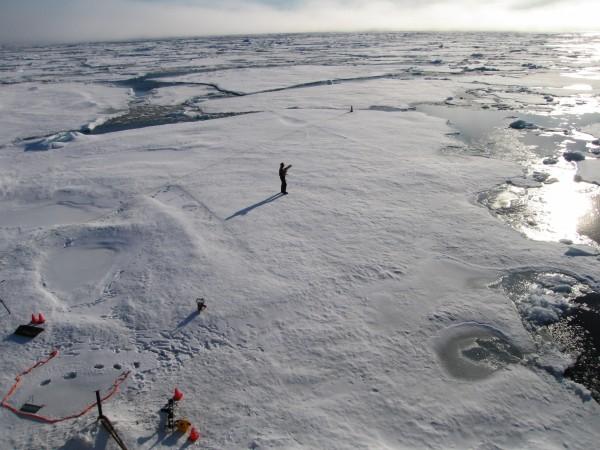
The North Pole has been experiencing drastic climate changes: its temperature has spiked up to 20 degrees C (36 degrees F). The Arctic region has grown 13 degrees Celsius hotter than it used to be.
A look at the loss of thicker (usually older) #Arctic sea ice in Octobers from 1979-2016 (PIOMAS, ice < 1.5 meters masked black) pic.twitter.com/BtHCwVUdKk
— Zack Labe (@ZLabe) November 14, 2016
This temperature rise has been described as an "extraordinary situation" by scientists on Twitter. Zack Labe, a PhD student at Cornell University, who initially discovered it, published a graph describing the climate change impact a few weeks back.
Today's latest #Arctic mean temperature continues to move the wrong direction... up. Quite an anomalous spike! pic.twitter.com/C93cQWUKV9
— Zack Labe (@ZLabe) November 15, 2016
The sea ice levels in the Arctic have depleted to a great extent too, compared to 2012 sea ice level, is at its lowest, reveals Sean Birkel, a research assistant professor at the University of Maine's Climate Change Institute.
The polar night phase prevailed over the North Pole, there is no sunrise during this period and the region gets really cold while thick ice sheets are formed after the annual melting, which takes place in September.
The temperatures recorded by the weather stations around the North Pole are warmer this year than they usually are. This rise in the temperatures is hindering the process of ice sheets' formation by turning the process slower.
"It's about 20C [36 degrees Fahrenheit] warmer than normal over most of the Arctic Ocean, along with cold anomalies of about the same magnitude over north-central Asia," said Jennifer Francis, an Arctic specialist at Rutgers University, as reported by the Washington Post.
"The Arctic warmth is the result of a combination of a record low sea-ice extent for this time of year, probably very thin ice, and plenty of warm/moist air from lower latitudes being driven northward by a very wavy jet stream," she said further.
"The extreme behavior of the Arctic in 2016 seems to be in no hurry to quit," Francis added.
The climatic cycles taking place in the Pacific Ocean called El Niño has reduced to some extent, the World Meteorological Organization (WMO) revealed, but the global warming still prevails.
"Another year. Another record. The high temperatures we saw in 2015 are set to be beaten in 2016," WMO Secretary-General Petteri Taalas said on Monday in a statement.
"In parts of Arctic Russia, temperatures were 6°C to 7°C above the long-term average. Many other Arctic and sub-Arctic regions in Russia, Alaska and northwest Canada were at least 3°C above average. We are used to measuring temperature records in fractions of a degree, and so this is different," Taalas explained further.














